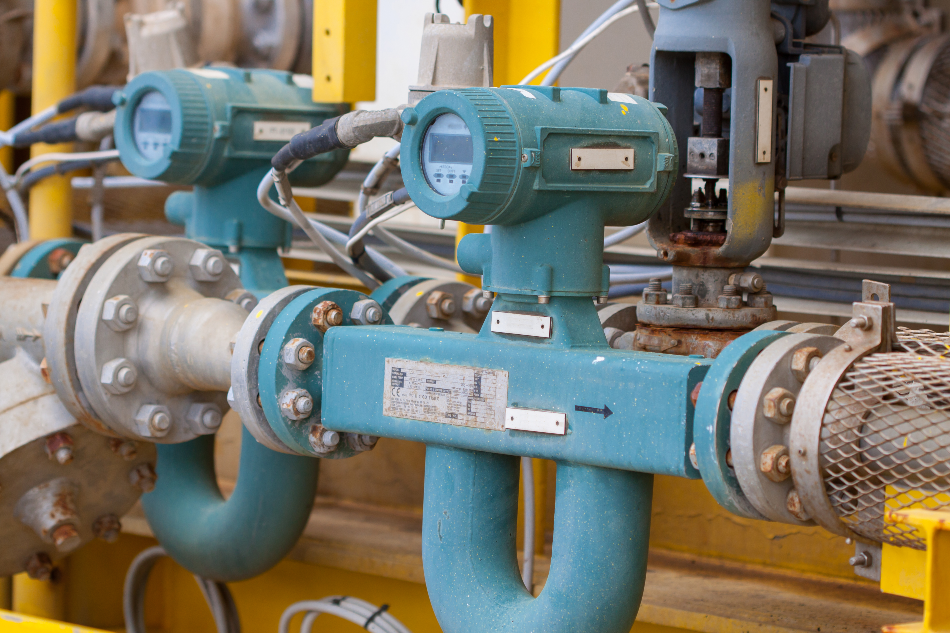Measurement of flow is a crucial parameter in many different processes, whether it is of a liquid or gas. It is important to ascertain that the right fluid is at the right place at the right time in many different industrial and scientific operations. The ability to conduct accurate flow measurements is crucial for product quality in some applications.

ImageCredit/Shutterstock:Curraheeshutter
Nanoparticles are no different to their macro-counterparts in this respect, but they do present problems in flow analysis that have to be overcome. Flow meters are commonly employed to analyze flow rate in both macro and nanosized particles.
Importance of Studying Nanoparticle Flow
Flow analysis of nanoparticles is a crucial area of research for several reasons. The addition of nanoparticles to liquids mean that even the simplest flow can become complex, which have relevance to several industries including the oil and gas industry. In biomedical research, the uptake by cells of nanoparticles is an important factor in determining nanotoxicity. Analyzing the flow and concentration of harmful nanoparticles in the environment (e.g., car exhaust fumes) is crucial for pollution and air quality studies.
In coal combustion and gasification, submicron particles are formed when inorganic substances evaporate. These are extremely cohesive and play an important role in ash adhesion. They can self-agglomerate by attaching to the surface of large particles, playing a part in the flow of the gas. Some studies suggest nanoparticles can be a contributing factor in respiratory disease.
Nanoparticle solutions are complex systems. Due to their size, nanoparticles have distinctive physiochemical properties which affect their behavior within solution. They can aggregate with other compounds also, which can complicate analysis of their behavior and flow. Size distribution is also relevant. For example, it can reveal the presence of aggregates in the solution, which in turn may indicate poor dispersion of the nanoparticles.
Thus, knowing how they behave within a gas or liquid and being able to detect them in the first place is important. Due to their small size, this is extremely difficult, but understanding these properties will lead to the development of more sensitive flow analysis equipment.
Solutions for Studying Nanoparticle Flow
However, there are solutions available for studying the flow of nanoparticles. Due to their unique chemical and physical behavior and properties, it is not enough to use a standard flow meter: specially designed equipment must be used which is able to detect the nanoparticles.
Specialized nanoparticle gas flow meters are sensitive enough to record particle size distribution in low sample volume, within a very large concentration range. Several commercially available nanoparticle flow meters are available on the market. These include:
- Nanoparticle Surface Air Monitors (NSAMs) – NSAMs use an electrometer which measures the charge of particles in a diffusion chamber. Used primarily to work out the deposited surface area of nanoparticles.
- Condensation Particle Counters (CPCs) – CPCs work by using a condensation method to enlarge smaller particles so they can be detected by an optical sensor. This method is useful for higher temperature analysis, such as car exhaust fumes.
- Scanning Mobility Particle Sizers (SMPSs) – This technique uses an electrostatic classifier in conjunction with a CPC. Particles are separated by size by the electrostatic classifier, turning the sample into a monodispersed aerosol (where all the particles present are of the same size, shape, and mass.)
- Differential Mobility Analyzers (DMAs) – DMAs work by applying a charge to an aerosol sample then passing it into a chamber where an electrical field is applied. Size distribution is worked out by the electrical mobility of differently sized particles. A DMA can be combined with a CPC.
These are used in a variety of applications including toxicology testing, atmospheric studies, bioaerosol research, vehicle exhaust analysis, and air quality testing. Undoubtedly, as the scientific community understands nanoparticle flow more thoroughly, these versatile pieces of equipment will be subject to further refinement and development, creating the next generation of flow meters which can be used to study these most enigmatic of particles.
Sources
Yuko Ibuki, Tatsushi Toyooka (2012) Nanoparticle Uptake Measured by Flow Cytometry, Nanotoxicity Pg. 157-166
https://link.springer.com/protocol/10.1007/978-1-62703-002-1_11
Agi, A et al. (2018) Mechanism governing nanoparticle glow behavior in porous media: insight for enhanced recovery applications International Nano Letters Vol. 8 Issue 2. Pp 49-77
https://link.springer.com/article/10.1007/s40089-018-0237-3
Zhang, Y et al. Study of the effect of nanoparticles on the bulk and flow properties of granular systems Fuel Processing Technology Volume 177 Pgs. 30-38
https://www.sciencedirect.com/science/article/pii/S0378382018302315
Analyzing Nanoparticles in Complex Mixtures – Challenges in Characterizing Small Particles: Exploring Particles from the Nano – to Microscale: A Workshop Summary
https://www.ncbi.nlm.nih.gov/books/NBK98077/
Disclaimer: The views expressed here are those of the author expressed in their private capacity and do not necessarily represent the views of AZoM.com Limited T/A AZoNetwork the owner and operator of this website. This disclaimer forms part of the Terms and conditions of use of this website.